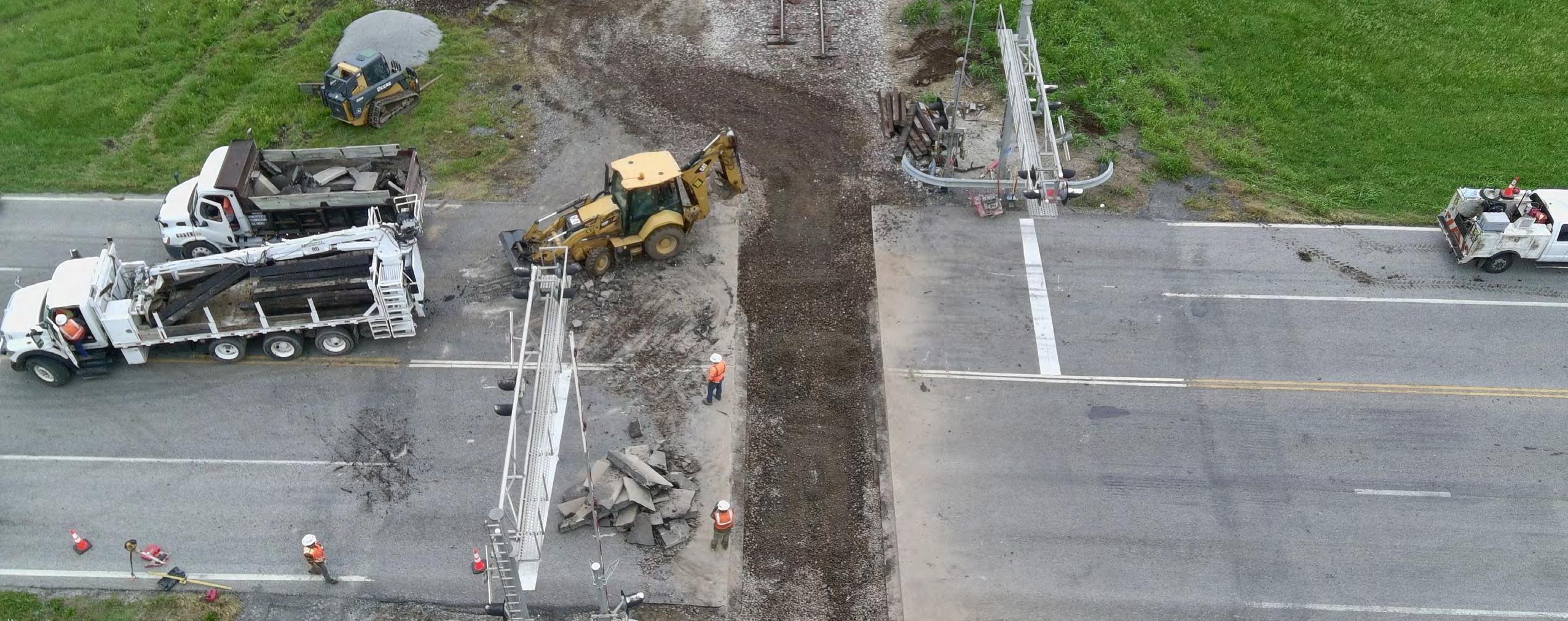
3 minute read
Collaborating with KDOT on Crossings
The intersections of busy highways and train corridors create a lot of stress on railroad crossings. The South Kansas & Oklahoma Railroad (SKOL) hopes a new style of crossing they’ve installed across two busy highways in Kansas will hold up better than previous iterations.
SKOL Roadmaster Mike Mulnix and his Maintenance of Way team have replaced crossings at US 400 highway near Cherokee and US 169 highway near Cherryvale multiple times over the past decade. They tried traditional concrete panel and rubber crossings, but neither could hold up to thousands of daily vehicle crossings and regular train traffic.
Looking for a longer-term solution, Mulnix came across a university student’s master’s project researching concrete tub crossings. After reading the paper, he dove into more research. The rail is secured directly to precast concrete panels on these crossings. There is no ballast or ties. The panels are laid directly on top a well-packed subgrade.
“They have a bigger footprint and fewer components. They’re more stable, less prone to settling, and there are fewer things that can fail or wear,” said Mulnix. “I reached out within Watco, and the Decatur & Eastern Illinois Railroad installed a similar one at a heavily trafficked crossing not long ago. They’ve been happy with it.”
The team installed the Cherokee crossing first, where they learned a lot of lessons that would be useful immediately. The Cherryvale crossing began deteriorating just as the other finished. The SKOL approached the Kansas Department of Transportation (KDOT) and presented the idea of installing the concrete tubs across Highway 169.
“There are two critical parts to any crossing. There’s the crossing itself, and then there’s the approach,” Mulnix said. “KDOT offered to grind out the old asphalt and lay a new approach at the level of the new crossing.”
By working with KDOT and using what they learned from the first install, the 169 crossing was installed in about half the time and ended up costing about 20% less. Now, these two busy highways and a railroad that’s busier than ever have crossings that should be safe and smooth for years. Some of these types of crossings have been in use on other railroads for nearly a decade with little to no maintenance.
“KDOT really came through for us on this one. We both want better, safer crossings for drivers and trains,” said Mulnix. “This partnership showed how quickly we can make improvements for everyone when we work together. I hope we can do more of these going forward.”






